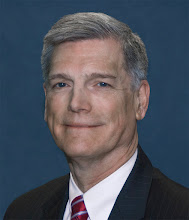 Last week the PBS series Frontline took on the safety culture of BP. Although titled, "The Spill", and ostensibly focused on the Deepwater Horizon spill in the Gulf of Mexico, the 54 minute expose dwelt almost entirely on the history of significant events at BP's mainland American facilities. Using bits of the backstory on the 2006 explosion at BP's Texas City refinery which killed 15 people, a 2006 leak from an Alaskan pipeline that spilled more than 206,000 gallons of oil, and the 2007 swamping of the Thunderhorse oil rig in the Gulf of Mexico, Frontline portrays BP as taking risks other companies thought unreasonable and putting cost-cutting ahead of safety. Frontline makes it appear that Deepwater Horizon was the inevitable result of putting production before safety.
Last week the PBS series Frontline took on the safety culture of BP. Although titled, "The Spill", and ostensibly focused on the Deepwater Horizon spill in the Gulf of Mexico, the 54 minute expose dwelt almost entirely on the history of significant events at BP's mainland American facilities. Using bits of the backstory on the 2006 explosion at BP's Texas City refinery which killed 15 people, a 2006 leak from an Alaskan pipeline that spilled more than 206,000 gallons of oil, and the 2007 swamping of the Thunderhorse oil rig in the Gulf of Mexico, Frontline portrays BP as taking risks other companies thought unreasonable and putting cost-cutting ahead of safety. Frontline makes it appear that Deepwater Horizon was the inevitable result of putting production before safety.Some online comments about the Frontline documentary question the balance and accuracy of the presentation. We'll leave that to others to decide, but take the appearance of the Frontline documentary to reflect media interest in the culture of the oil industry that rose sharply with Deepwater Horizon last spring.
The U.S. nuclear industry has dealt with similar questions. Since the founding of the Institute of Nuclear Power Operations (INPO) in 1979, the industry has recognized its obligation to strive for excellence - a standard higher than mere compliance with regulations. This striving has produced remarkable results: U.S. nuclear plants are demonstrably safer and more productive today than they were before INPO was formed. Even so, the industry continues to learn from its difficulties, such as the 2002 near-miss at the Davis-Besse plant.
In 2002, Davis-Besse brought attention to nuclear safety culture in the same way that Deepwater Horizon has brought attention to the oil industry's safety culture this year. For the Nuclear Regulatory Commission, the issue came to a head in a May 2004 oversight hearing in which Senator George Voinovich (D-OH) asked tough questions about safety culture at Davis-Besse. Since that time, the NRC, NEI and INPO have worked to delineate the features of a sound nuclear safety culture and determine what each organization should do to promote it. Last August, the BP Deepwater Horizon Oil Spill and Offshore Drilling Commission heard testimony from INPO's CEO, Jim Ellis, on some of the insights and lessons that the oil industry can take from the nuclear industry's experience in this area. In a November 2 posting, the New York Times Green blog shared more recent thinking on this subject from Interior Secretary Salazaar.
In the past year, the nuclear industry has been pilot-testing a process for managing safety culture. That process is described in a draft NEI document, NEI 09-07, "Fostering a Strong Nuclear Safety Culture." (NEI 09-07 is available through NRC's ADAMS public document system.)
The challenge in monitoring and managing safety culture is seeing the faint signals of emerging problems amidst the normal noise of a large, productive organization. In high-performing organizations, the faint signals may include subtle patterns linking seemingly unrelated equipment failures or human errors; anecdotal information; or perceptions and attitudes reflected in employee survey data, for example. NEI 09-07 describes a systematic way to examine this disparate data by having management step back periodically from their other daily activities and review the normal noise with a "safety culture filter". Evidence from the pilot program suggests this approach is yielding helpful insights for participants. The power reactor pilot program is expected to be completed in the first half of 2011.
We hope that media interest like that indicated by the Frontline documentary encourages improvements in safety culture throughout all high-performance industries. As shown by Mr. Ellis' testimony last August and other contacts between the nuclear and oil industries, we know that the nuclear industry will do all it can to share lessons learned in the pursuit of excellence with other industries eager to learn as well.

Comments
...except that there were 11 people killed on the Deepwater Horizon and a record amount of oil spilled in the Gulf, causing a significant amount of environmental damage to the sea life and some of the coastal regions. Whereas Davis Besse's reactor head corrosion was caught before it was an actual failure, and even if it had failed would almost certainly not have caused any injuries or environmental problems.
Don't get me wrong. It's good that people reacted strongly to the Davis Besse issues, to improve safety focus and awareness of the potential for failures. But they are in no way comparable to the accident in the Gulf this year.